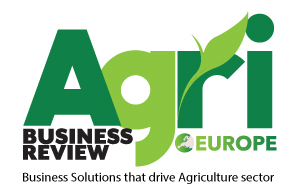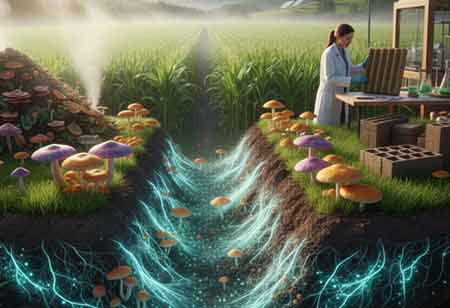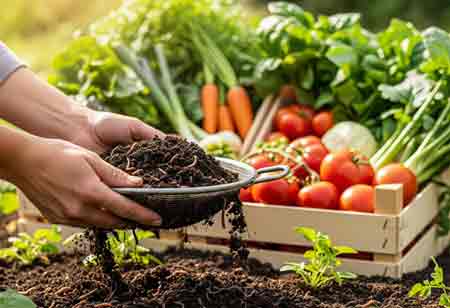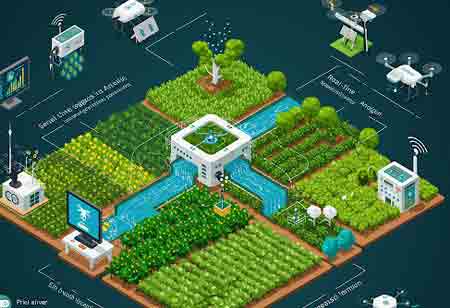Thank you for Subscribing to Agri Business Review Weekly Brief
Agri-Waste Management: Turning Crop Residues into Valuable Resources for a Circular Economy
Agricultural practices produce significant crop residues, which are burned and are harmful. However, innovations in waste valorization are transforming these residues into valuable resources, promoting environmental sustainability, economic growth.
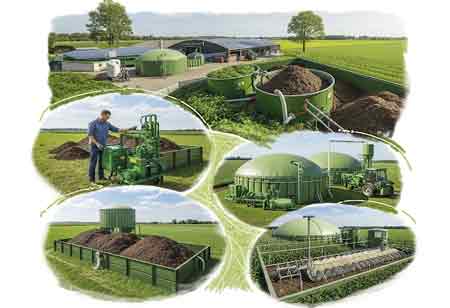
By
Agri Business Review | Thursday, May 22, 2025
Stay ahead of the industry with exclusive feature stories on the top companies, expert insights and the latest news delivered straight to your inbox. Subscribe today.
Fremont, CA: Agricultural practices inevitably produce large amounts of crop residues, which have been burned, causing air pollution, greenhouse gas emissions, and the depletion of vital soil nutrients, endangering soil health. However, a paradigm shift is underway, driven by a growing understanding of circular economy principles and remarkable advancements in waste valorization technologies. Agri-waste is no longer merely a problem to be disposed of; it's a valuable resource with immense potential for economic, environmental, and social benefits.
Innovative Technologies for Crop Residue Valorization
Recent advancements in agri-waste management are increasingly focused on developing diverse and impactful conversion pathways, transforming agricultural residues into valuable resources across multiple sectors.
In bioenergy production, anaerobic digestion of crop residues and animal manure is widely adopted to generate biogas, a renewable energy source suitable for cooking, heating, and electricity. Innovations include upgrading biogas to bio-CNG, a cleaner alternative fuel for transportation. Additionally, technologies like pyrolysis and gasification are being used to convert agricultural waste into bio-oil and producer gas. Progress in biofuels also includes the development of cellulosic ethanol from lignocellulosic biomass, such as corn stover and wheat straw, alongside ongoing research into biohydrogen. Moreover, compressing crop residues into biomass pellets and briquettes offers a sustainable, energy-efficient alternative to traditional coal and wood fuels for industrial use.
In soil amendment and nutrient recovery, composting and producing biofertilizers from crop residues enhance soil health, improve water retention, and reduce dependency on synthetic fertilizers. These processes also mitigate open-field burning and boost soil microbial activity. Similarly, the pyrolysis of crop residues yields biochar—a carbon-rich material known to enhance soil fertility, increase water retention, and contribute to long-term carbon sequestration.
Industrial applications of agri-waste are also expanding. Crop residues such as wheat and rice straw are being repurposed into biodegradable paper and packaging materials, offering sustainable alternatives to plastic. Agricultural byproducts, including potato waste and wheat stalks, are being processed into enriched animal feed, creating cost-effective nutrition solutions and new income opportunities for farmers. Furthermore, materials like sawdust and coconut husks are being transformed into particleboard, insulation panels, roofing tiles, and other construction materials. Natural dyes and pigments derived from onion skins, beetroot peels, and pomegranate husks are also gaining attention as eco-friendly, chemical-free options for textiles, cosmetics, and food products.
Driving Factors and Emerging Opportunities
The agricultural waste management market is projected to reach USD 32.52 billion by 2030, driven by key factors. Growing environmental awareness worldwide is prompting efforts to reduce pollution and combat climate change, encouraging the adopting of more sustainable waste management practices. At the same time, continuous advancements in waste processing technologies enable more efficient and cost-effective methods for converting agricultural waste into usable resources. Supportive government policies, including subsidies and initiatives to promote sustainable agriculture and waste-to-energy projects, further accelerate market growth. Additionally, integrating Internet of Things (IoT) and artificial intelligence (AI) technologies enhances operational efficiency and enables data-driven decision-making across waste management systems.
A multi-pronged approach is needed to tackle agricultural waste challenges. This includes strong policy interventions, technological innovation, capacity building, collaborations, and financial assistance. Embracing innovation can transform agricultural waste into a sustainable development engine, generating new revenue streams, fostering rural prosperity, and contributing to a circular economy.
